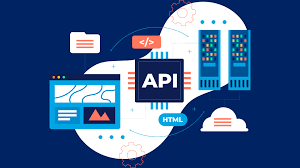When extracting data from APIs, authentication is often required to ensure that only authorized users or applications can access the data. Here’s an overview of the authentication process and accessing APIs for data extraction:
- API Authentication Methods:
APIs use various authentication methods to verify the identity of the requesting entity. Some common authentication methods include:- API Keys: An API key is a unique identifier provided by the API provider. It is typically included in the API request as a parameter or in the request headers. API keys are a simple way to authenticate requests and track usage.
- OAuth: OAuth (Open Authorization) is a widely used protocol that allows third-party applications to access user data on behalf of the user. It involves obtaining an access token from the API provider by redirecting the user to an authorization page. The access token is then used in subsequent API requests to authenticate the application.
- JWT (JSON Web Tokens): JWT is a compact, URL-safe token format that securely represents claims between two parties. It contains encoded information about the user or application and is signed by the API provider to ensure its authenticity.
- Basic Authentication: Basic authentication involves sending the API request with a username and password encoded in the request headers. This method is less secure than others and is typically used over HTTPS to encrypt the credentials.
- Custom Tokens or Signatures: Some APIs may use custom tokens or signatures that are generated using proprietary algorithms. These tokens or signatures are passed in the API requests to authenticate the user or application.
The authentication method used by an API will depend on the specific requirements and security measures implemented by the API provider.
- Accessing APIs for Data Extraction:
Once you understand the authentication method required by the API, you can access the API for data extraction. Here’s a general process to follow:- Obtain API Credentials: If the API requires authentication, you need to obtain the necessary credentials, such as an API key, access token, or username/password.
- Include Authentication Details: Depending on the authentication method, you will need to include the authentication details in your API requests. This could involve adding headers, parameters, or tokens to your requests. Refer to the API documentation for specific instructions.
- Make API Requests: Use an HTTP library or language-specific tools (e.g., Python’s
requestslibrary) to send HTTP requests to the API endpoints. Include any required parameters or data to retrieve the desired data. - Handle Pagination: If the API returns large amounts of data or implements pagination, you may need to make multiple requests to retrieve all the data. The API documentation will provide guidance on how to handle pagination, such as using page numbers or cursor-based pagination.
- Parse and Extract Data: Once you receive the API responses, parse the data in the specified format (e.g., JSON or XML) to extract the relevant information. Depending on your requirements, you may need to transform or store the extracted data for further processing or analysis.
Remember to adhere to the API provider’s terms of service, including any rate limits or usage restrictions. It’s good practice to review the API documentation thoroughly to understand the available endpoints, request formats, authentication requirements, and any specific guidelines for accessing and extracting data from the API.
By authenticating and accessing APIs properly, you can extract data securely and efficiently from various sources as part of your data scraping process.
